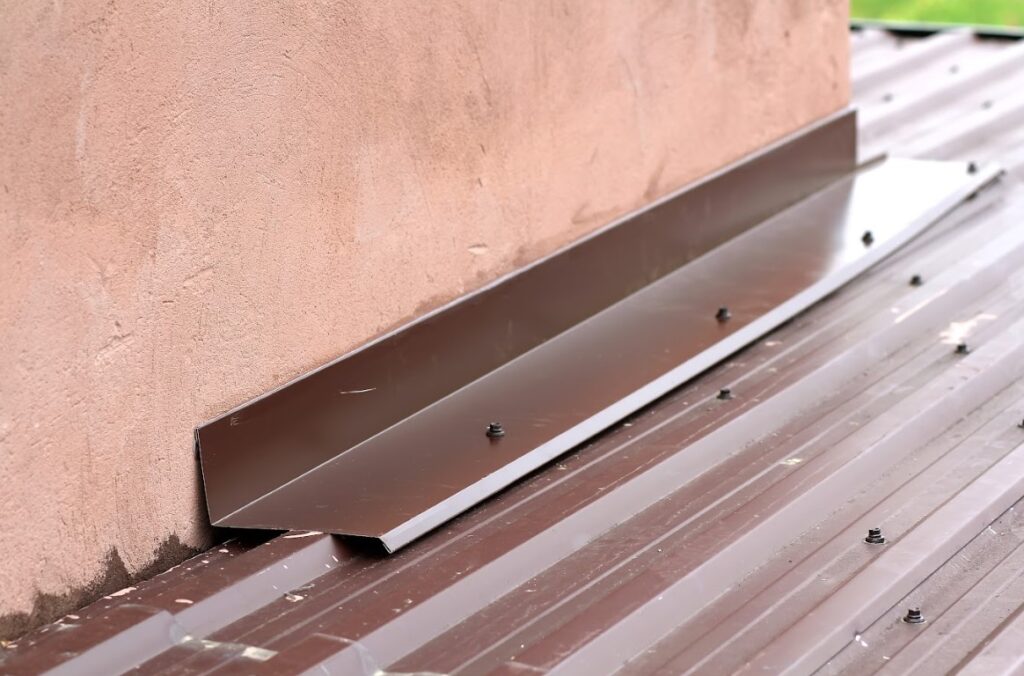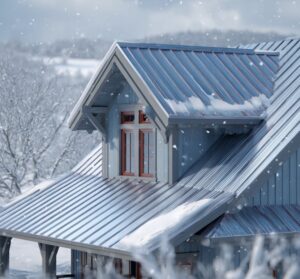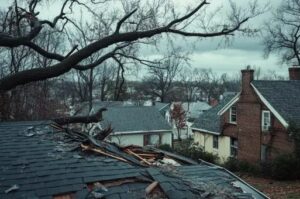Spring in Western Colorado is a breath of fresh air—literally. The snow starts to melt, days stretch a little longer, and you can enjoy your morning coffee without bracing against an icy wind. But while you’re making plans for hiking trails and backyard barbecues, your roof might be quietly waving a white flag.
One of the most common roofing issues to pop up this time of year? Roof flashing failures. Flashing is that thin strip of metal you’ll find around chimneys, skylights, vents, and where different roof sections meet. It’s the unsung hero of your roof, sealing those vulnerable areas so water can’t get in.
The trouble is, after months of battling snow, ice, wind, and freezing temps, flashing can crack, warp, or loosen. And once spring showers roll in, even a small gap can turn into a steady drip that threatens your home from the inside out meaning you’ll need flashing and roof repair, fast.
Why Spring Weather Hits Flashing Hard
Winter doesn’t exactly pamper your roof. In fact, flashing takes one of the toughest hits during the colder months.
Heavy snow sits on your roof for weeks, sometimes melting just enough during the day to refreeze at night. This freeze-thaw cycle causes constant expansion and contraction in the materials, which can break seals or pull flashing away from the surface it’s meant to protect. Add in gusty winter winds and the occasional ice dam, and you’ve got a recipe for trouble once the temperatures rise.
When spring arrives, all that melting snow and seasonal rain starts testing every seam, edge, and joint. If your flashing’s been weakened, you’ll know—sometimes by the telltale water stains on your ceiling.
Telltale Signs Your Roof Flashing Might Be Failing
While flashing isn’t something you’ll notice every day, it pays to keep an eye out for these signs—especially in the first few weeks of spring:
- Water stains indoors – Look for brown or yellowish spots near fireplaces, skylights, or at the top corners of rooms.
- Visible gaps or lifting metal – If the flashing looks like it’s pulling away from the roof or wall, water can slip right in.
- Rust or corrosion – Over time, trapped moisture can eat away at the metal.
- Loose or missing shingles nearby – Water getting under flashing can cause surrounding shingles to loosen or warp.
- Debris in roof valleys – Piles of leaves or pine needles can trap water against flashing and speed up damage.
Why You Don’t Want to Wait on Flashing Repairs
It’s easy to think of flashing as just “a little metal trim” and put off fixing it. But ignoring flashing problems is a fast track to bigger, more expensive repairs.
Here’s what can happen when flashing failures are left untreated:
- Water intrusion can damage rafters, decking, and other structural components.
- Mold and mildew growth can start in as little as 24–48 hours after water enters your home.
- Insulation can be ruined, leading to higher heating and cooling bills.
- Interior finishes like drywall, paint, and flooring can be stained or warped.
A quick fix in spring is far less stressful—and less expensive—than repairing water damage in the middle of a summer thunderstorm.

How Roofers Tackle Flashing Repairs
When you call in a pro, they’ll start with a full inspection to confirm the problem and check for any related damage. The repair process usually involves:
- Removing surrounding shingles to access the problem area.
- Replacing or resealing the flashing with high-quality, weatherproof materials.
- Checking nearby roofing components for early signs of wear.
- Reinstalling shingles so the roof is watertight and blends seamlessly.
Because flashing is part of your roof’s waterproofing system, it’s one job best left to the professionals. A proper repair ensures the flashing is sealed correctly and ready to stand up to whatever spring—and the seasons ahead—throw at it.
Preventing Flashing Failures Before They Start
While you can’t control Western Colorado’s wild weather, you can take a few steps to give your flashing a fighting chance:
- Schedule roof inspections twice a year—once in spring and once in fall.
- Keep gutters clear so water flows away from the roof’s most vulnerable spots.
- Trim overhanging branches to reduce debris buildup and physical damage.
- Address minor roof leaks immediately before they spread to flashing areas.
A little preventive care now can mean fewer surprises—and fewer repair bills—later.
Expert Roof Flashing Repair in Grand Junction and Beyond
Roof flashing might be small, but it’s a mighty line of defense against water damage. If you’ve noticed signs of trouble—or just want peace of mind before spring storms roll in—it’s the perfect time to bring in the experts.
Bros Roofing in Grand Junction, Colorado specializes in flashing repairs that keep your roof tight, dry, and ready for every season. Our experienced team knows exactly where to look for damage, how to make repairs that last, and how to protect your home from the inside out.
Whether it’s a quick seal, a full flashing replacement, or a thorough spring inspection, our team is here to make sure your roof is ready to handle whatever Mother Nature dishes out next. Contact us today for your roof repair!



